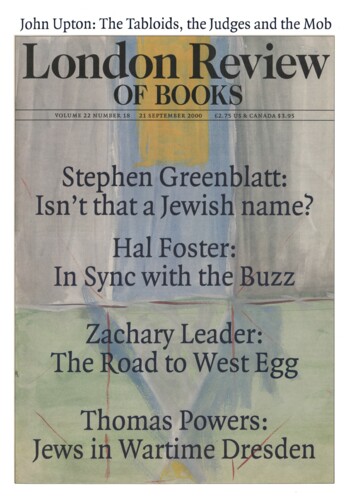Principalities of June
Original light broke apart,
the Gnostics say,
when time began,
singular radiance
fractioned into form
– an easy theory
to believe,
in early summer,
when that first performance
seems repeated daily.
Though wouldn’t it mean
each fracturing took us
that much further
from heaven?
Not in this town,
not in June: harbour
and cloudbank, white houses’
endlessly broken planes,
a long argument
of lilac shadows and whites
as blue as noon:
phrasebooks of day,
articulated most of all
in these roses,
which mount and swell
in dynasties of bloom,
their easy idiom
a soundless compaction
of lip on lip. Their work,
these thick flowerheads?
Built to contain
sunlight, they interrupt
that movement just enough
to transfix in air, at eye level,
now: held still,
and shattering,
which is the way with light:
the more you break it
the nearer it comes to whole.
Summer Landscape
– Stuart Davis
This happy bit of Modernism could almost be
our town, a simple geometry of white houses
complexified by scatter, angles of roofs
and fences, one cheerful tree, a yellow band
of dunes. A rippling harbour interpenetrates
everything: watery planes between scribbled clouds,
jumble of masts and riggings, spars,
blue surface, black dinghy, this shingled expanse
of shadow, and he’s even painted around his Cubist
seaside view a border, each side a different colour
(pink and black, yellow and fence-picket white)
as if to emphasise how firmly this place
is framed, known through all the art
that’s been made of it, till it’s a painting of itself:
light heightened and arranged. Exactly
what our town’s been doing, these new-season days
out to impress with the sheer bravado
of what the atmosphere’s done this time.
Yesterday a final slant of afternoon lit up
with heart-firing warmth the rusting side
of a white boat tied to the town pier.
Heaven, just then, and something like
the way a familiar face flares present
in candlelight, depths made clear
in the slightest flame … Then gone, leaving
a plain white flank starred with rust,
perfectly handsome but nothing to shout about
– as people actually did, walking on Commercial,
when they saw the harbour bathed in rose.
Weeks now, on the spire of the Unitarian Universalist
Meeting House, a red scaffolding’s ringed
the crown, square-boned New England earnestness
gaining a jaunty bit of costume:
our spire disguised, for the season,
as a minaret, or a lighthouse in Alexandria,
or the high tower room of some exiled sultan’s
fabled realm … What a little bit of red can do!
Inside, whale’s teeth medallions jewel
the pews, and walls and ceiling deceive
with ornate grisaille, the trompe l’oeil work
of some genius architectural painter
passing through, who drew a hundred years
of eyes up the long lines of his false columns
to the gorgeous details of his false vault
– over which the steeple climbs like a steamstack
into the blue. I keep imagining – every day,
walking by – how the view from up there would tumble
in a density of gardens and dormers, our rooftops
splayed in fractal array. The perfect place,
if it were our work in the world simply to attend
to light, these shows given hourly –
Look now: that ultraviolet curtain’s drawn,
and phantom stagehands trundle from the wings
a bank of shade, looming, cloud-belly blue.
Scratch that; here’s a sudden wash of sun,
classical in its severity, striking all shadows
from the stage. I have a friend, Jade, a carpenter
who goes about her work in silver bangles,
bracelets overlaid on each arm, which seem
as much part of her toolkit as hammer
and prybar and her marine-blue pick-up truck.
Dependable and brave, she flashes in the sun,
mornings, when she mounts the steeple,
which now is scraped to nude intensity,
pine planks breathing salt air again,
shed of their pickling paint. Her task:
the regilding of the acanthus, our spire’s
once-golden flourish angling up into summer air.
Who knew? All these years it’s been a briny,
verdigrised blue, but Jade restores it to a lustre
unremembered here. She poses high above
the wood-block print of a town, the steady, chilly harbour,
and anchors to the sturdy tip a crown.
Send Letters To:
The Editor
London Review of Books,
28 Little Russell Street
London, WC1A 2HN
letters@lrb.co.uk
Please include name, address, and a telephone number.

